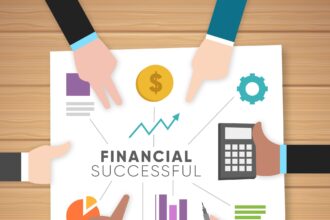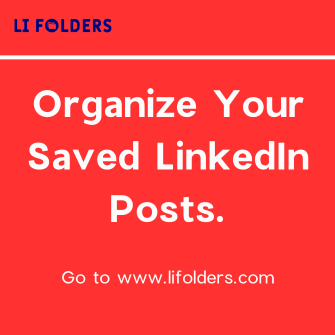
You can tell if someone pays for LinkedIn by checking for the premium badge on their profile, which indicates they've invested in advanced tools to boost their professional growth. This badge reveals their access to exclusive features like enhanced search capabilities, advanced analytics, and InMail for direct messaging. Essentially, it means they're more actively engaging in networking and have resources at their disposal to connect with leaders in their industry. You'll also notice that their profile might appear more frequently in search results, setting them apart in professional circles. Exploring these differences could provide you with deeper insights into the benefits of LinkedIn Premium.
Identifying Premium Profiles
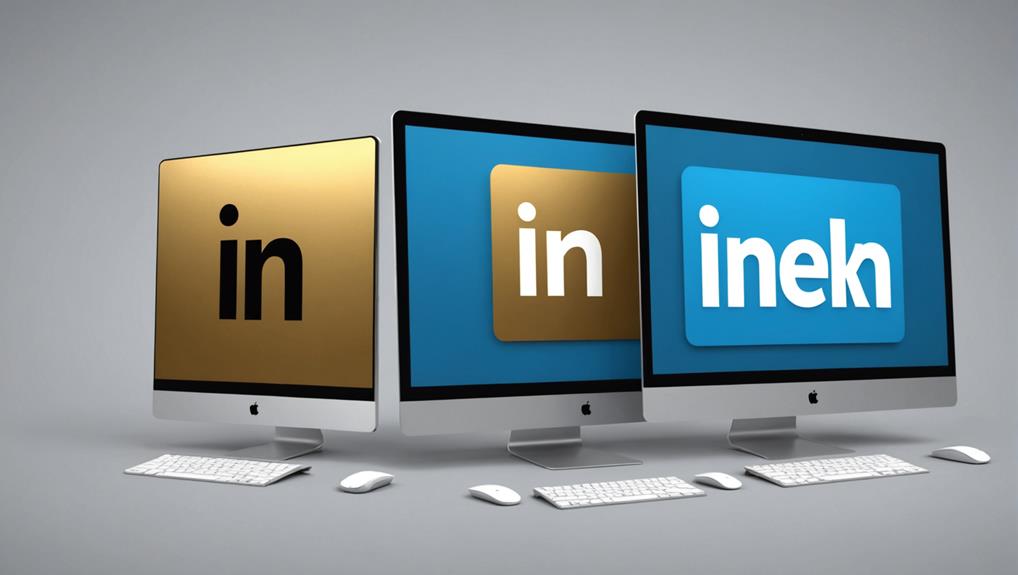
Although LinkedIn doesn't explicitly label paid accounts, you can often identify Premium profiles by the presence of a LinkedIn badge next to the user's name. This subtle sign lets you in on a little secret: they're part of a community that invests in their professional growth. You might feel a twinge of curiosity, wondering what doors that badge could open for you.
When you scroll through your connections, you'll notice that not everyone has this badge. It's an exclusive mark, suggesting that the person behind the profile is taking extra steps to enhance their professional network. They're not just participants; they're players, keen on making the most of the platform. You're part of this vast network too, and seeing these badges can make you ponder your own path and potential on LinkedIn.
Spotting these badges isn't just about recognizing who's paying. It's about understanding the layers of commitment within your network. It encourages you to think about your own presence and how you want to be seen. Are you just passing through, or are you looking to build something lasting? That badge could be a nudge toward taking your own leap into the LinkedIn Premium world.
Exclusive Features of Paid Accounts
You'll gain access to enhanced search capabilities, advanced analytics, and the ability to directly message anyone on LinkedIn with a paid account. Imagine being able to pinpoint the exact profiles that align with your career goals or business needs. With the refined search options, you can filter potential connections by location, industry, company size, and even job function, making it easier to find your tribe among the millions of users.
Moreover, the advanced analytics on offer will give you insights into who's viewing your profile and how they found you. This knowledge allows you to tailor your content and outreach, ensuring you're not just reaching out, but connecting in ways that resonate. You'll see which of your posts are performing well, who your audience is, and how to enhance your visibility.
Lastly, the InMail feature is a game changer. No longer do you need to wait for a mutual connection to introduce you. You can take the initiative and directly message decision-makers or potential collaborators, making it simpler to forge meaningful connections that could lead to exciting opportunities. This direct line of communication sets you apart, embedding you deeper within the professional community.
Profile Badge Differences
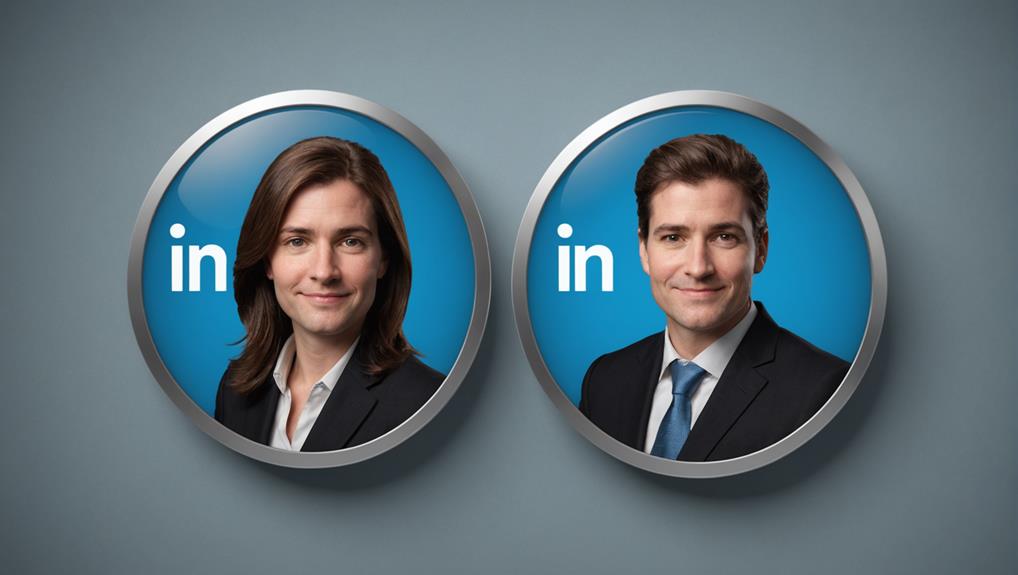
One noticeable difference between free and paid LinkedIn accounts is the profile badge. When you're scrolling through profiles, you might notice that some badges are more eye-catching or have additional features compared to others. This subtle marker can signal a member's premium status, setting them apart in a sea of professional profiles.
If you're wondering whether to upgrade, consider how a premium badge could enhance your profile's visibility. It's not just about standing out visually; it's about feeling integrated into the network's fabric, where additional features support your professional growth. This badge acts like a beacon to others, indicating that you're deeply invested in your career development and willing to go the extra mile.
Moreover, belonging to the group of LinkedIn Premium members comes with a sense of exclusivity and community. It's like wearing a digital pin that subtly nods to your commitment to not just participating in, but actively contributing to, the professional community. Whether it's for networking, job searching, or building influence, this badge can align you more closely with those who take their professional engagement seriously, opening doors to more profound connections and opportunities.
Visibility and Search Advantages
While free LinkedIn accounts offer basic search capabilities, upgrading to a premium subscription significantly enhances your visibility and search ranking. This is crucial if you're keen to stand out in your industry. With a premium account, your profile is more likely to appear at the top of search results, not just for your connections, but also for recruiters and potential business partners browsing the platform. This heightened visibility makes you part of a select group, enhancing your sense of belonging within professional circles.
Furthermore, premium members enjoy advanced search filters that aren't available with a free account. These filters allow you to fine-tune your searches, helping you connect with like-minded professionals and industry leaders who can propel your career forward. It's about being in the right place at the right time, and a premium subscription places you at the center of the action. You're not just another face in the crowd; you're a key player in a community of ambitious, forward-thinking professionals.
InMail Capacity Expansion
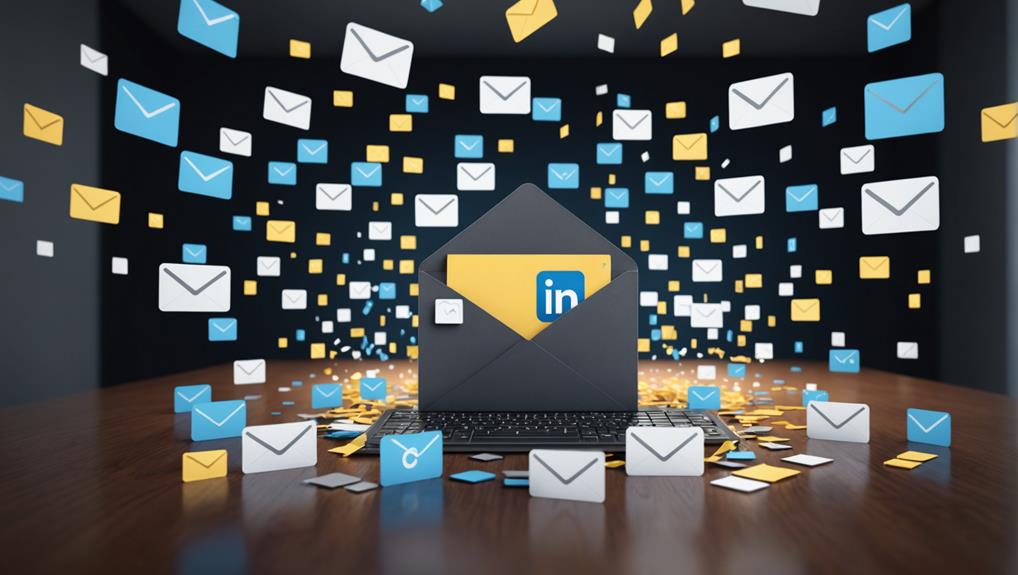
Boosting your InMail capacity is another significant perk of upgrading to a LinkedIn premium account. You're not just increasing the number of messages you can send; you're amplifying your ability to connect and belong to a broader professional community. Think of it as your exclusive pass to initiate conversations with industry leaders and potential mentors who typically sit beyond the reach of a basic account.
You'll find that with this expansion, you're able to reach out more frequently without the fear of running out of credits. This means you can keep the conversation flowing, establish stronger relationships, and immerse yourself more deeply in your professional field. It's about making meaningful connections that not only enhance your career prospects but also make you feel part of something larger than yourself.
Who Views Your Profile?
Knowing who views your profile on LinkedIn can provide valuable insights into your professional visibility and networking effectiveness. When you see that colleagues, industry leaders, or potential employers are checking out your page, it's a clear indicator that you're making waves in your field. You're not just a face in the crowd; you're someone who stands out.
You can feel a sense of belonging and recognition when people from your professional sphere take time to explore your achievements and skills. It's like being acknowledged in a community where everyone strives to grow and excel. Each view serves as a nudge that you're on the right path, encouraging you to keep pushing forward.
However, while it's great to know who's been viewing your profile, remember that these views are just the start. They open the door to deeper connections and collaborations. Don't hesitate to reach out, say hello, and engage with those who've shown interest. After all, networking is about building relationships, not just accumulating views. By fostering these connections, you're weaving yourself more tightly into the fabric of your industry community, enhancing both your sense of belonging and your professional prospects.
Analyzing Connection Trends

You can gain deeper insights into your network's growth and opportunities by analyzing connection trends on LinkedIn. By tracking how your network evolves, you'll start to see patterns that are crucial not just for growing your connections but also for strengthening the bonds within your professional community.
Start by examining who's connecting with you. Are they from similar industries or varied fields? This can reveal your standing in your sector and highlight potential areas for expansion. Moreover, look at the timeline of your connections. Do you see spikes during certain periods? Maybe after a big project completion or a successful presentation at a conference? These spikes can tell you a lot about when you're most visible and attractive to others in your field.
Engage actively with new connections. Don't just add people; start conversations, comment on their posts, and share relevant content. This makes you more than just a name on a list; you become a contributing member of your community.
Comparing Free and Premium Tools
Let's explore the differences between LinkedIn's free and Premium tools to better understand which might best suit your professional needs. You're part of a vast community on LinkedIn, where both free and Premium options help you connect, but in slightly different ways. With the free version, you can build a robust profile, search for jobs, and establish connections. It's a great start, allowing you to join groups and participate in discussions, fostering a sense of belonging and community.
However, if you're aiming to deeply integrate into the professional community, LinkedIn Premium might feel like a key to more exclusive areas of the network. This paid tier enhances your ability to see who's viewed your profile, providing deeper insights into the network you're becoming part of. It also offers InMail messaging, so you can reach out directly to influencers and decision-makers, which isn't possible with the free version.
Furthermore, Premium members gain access to specialized learning courses and advanced search filters, which can refine your ability to connect with the right people and opportunities. Choosing between the free and Premium versions depends on how actively you want to engage and invest in your professional journey within this community.
Conclusion
You've seen how premium LinkedIn accounts stand out with exclusive features, enhanced visibility, and a profile badge that marks them as paid users. If you're tracking who views your profile or expanding your network through InMail, these are clear indicators of a premium membership. So, when you compare the tools and perks side by side, it becomes easier to spot who's invested in their LinkedIn presence by opting for a paid subscription. Keep an eye on these signs to identify premium users.




